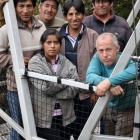Developing Capacity for Conservation in Peru
Completion Date: Mar 31, 2010
- ACCA (Asociacion para la Conservacion de la Cuenca Amazonica)
- Greenheart Conservation Company
- Drishti--Centre for Integral Action
Michael Simpson
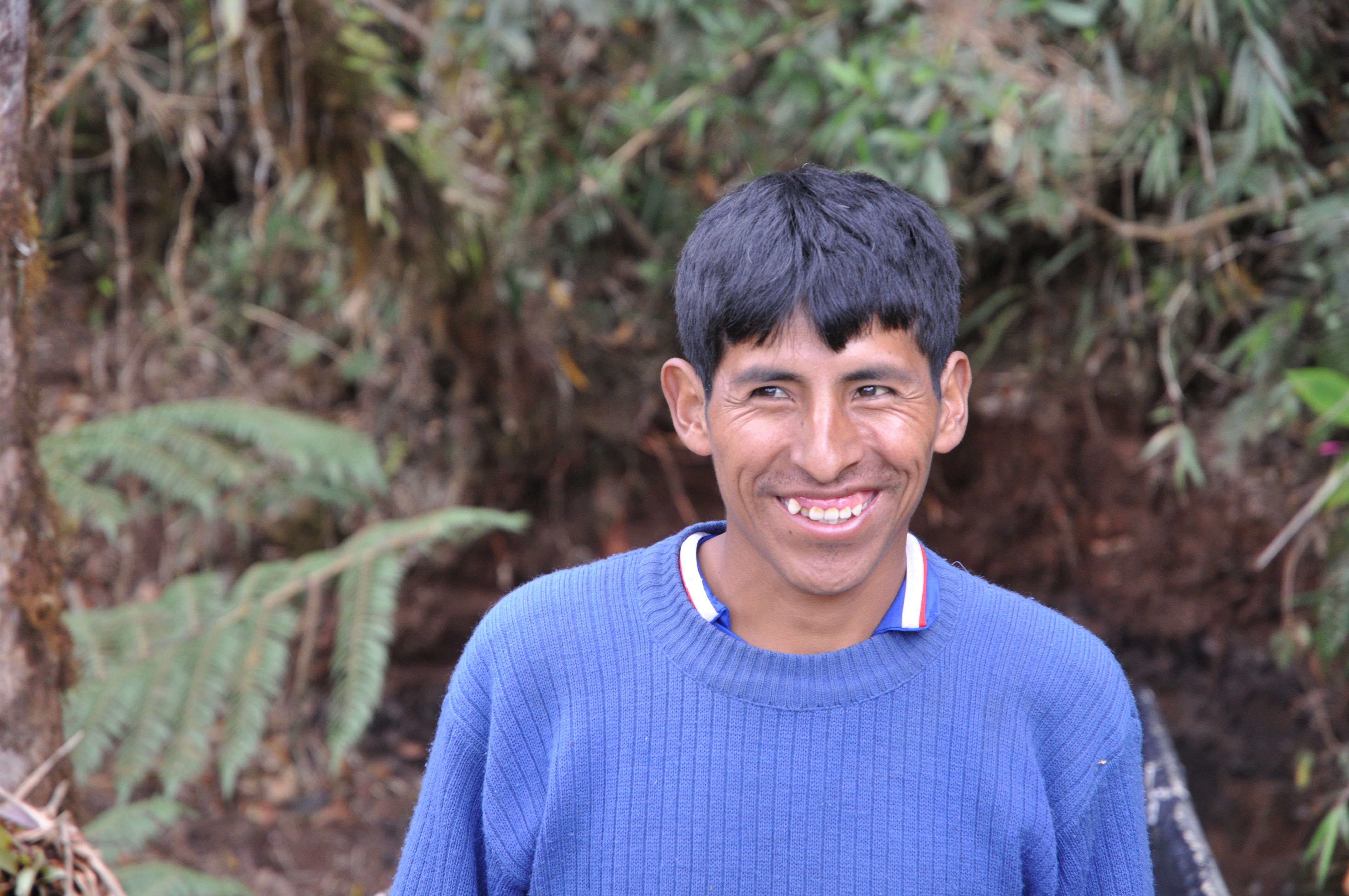
“We cannot solve our problems with the same thinking we used when we created them.”
~ Albert Einstein
In sustainable development, we attempt to address many interpenetrating challenges—such as, poverty, lack of good governance, and environmental degradation. None of these can be solved on their own—pull on one thread, suddenly the whole ball of yarn tumbles into your hands.
We do this work using an array of methods and interventions, of which capacity building is perhaps the most important. Why? To echo Albert Einstein, “we cannot solve our problems with the same thinking we used when we created them.” Today’s colleges and universities are training students to address problems that do not even exist yet! To achieve sustainable living globally, we all have to get creative, think outside the box, and act in ways that can break through the status quo. And so that is why our work focuses on developing capacity—we need new skills, views, values, and policies to take our solutions to the next level.
Since 2007, One Sky has been developing capacity with Peruvian partner organization ACCA (Asociacion para la Conservacion de la Cuenca Amazonica) to enhance effectiveness of conservation efforts and sustainable livelihoods in the Amazon rainforest watershed near Cusco, Peru. This has not only helped ACCA develop capacity for conservation work, but also enabled One Sky to develop capacity for leadership training; we have already began applying these lessons learned to other One Sky projects elsewhere. In this brief article, we describe this project and some of the results to date.
Capacity Development
One Sky takes an ‘integral’ approach to capacity development (also called capacity building). That means, in addition to the ‘hardware’ of social change such as new technologies, institutions, and practices, we also need to consider the ‘software’ such as the awareness, worldviews, and thinking that give rise to solutions that stick. And, our focus includes individuals as well as collectives, like entire organizations or whole communities.
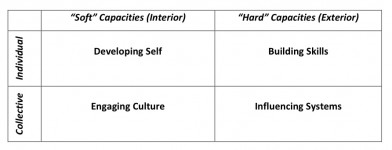
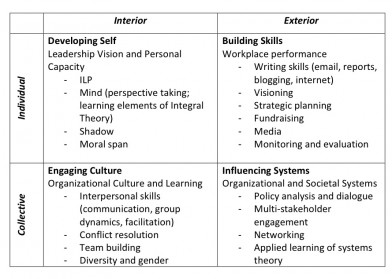
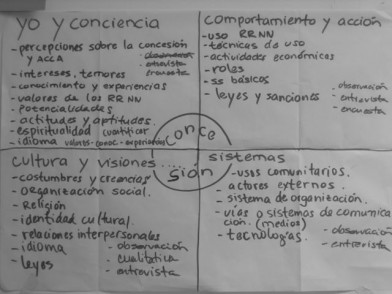
Where to Go Depends on Where You Are
Like anyone who’s gone hiking knows, to get to the next level of the mountain, you have to first figure out where you are and which route would best take you upwards. Similarly, we began this project with a ‘baseline assessment.’ We asked staff, coordinators and directors of ACCA, where they currently experienced flow and where they felt stuck. This then helped us map a route forward.
The baseline assessment showed that the primary challenge that ACCA faced in 2007 was limited capacity for engaging communities. This was part of a general gap regarding their work with the ‘human dimensions’ of conservation work. Elsewhere in more remote areas in the region, ACCA has been able buy land for conservation. This is one method for conserving land—by literally making it private land. However, in the Cusco region, this land-purchase approach toward conservation did not work. With the great potentials for tourism and resource extraction, as well as lucrative agricultural projects, land ownership is a huge issue in this part of Peru. Added to that, it is home to a complex array of cultures including lowland and highland Queros, numerous Amazon indigenous groups, traditional Quechua, modern colonists as well as land-owning tourism operations. In this context, understandably, conflicts quickly arose over land ownership, and ACCA staff realized they needed better capacity to work with social issues, to understand local worldviews, and to engage with communities more effectively.
The assessment also showed many assets that ACCA has. Most notably, ACCA’s open-mindedness to learn and take its approach to the next level. The general atmosphere in the ACCA Cusco office was one of ‘pausing and reflecting,’ to then learn and build its capacity for greater effectiveness.
While working on this project, I reflected a lot on ACCA’s former ‘land-purchase approach’ to conservation, realizing that it may actually be quite similar to the very approaches that deforest and degrade land. Not in what was done, but in terms of the thinking behind it. Are there similarities between the extractive attitude that motivates illegal logging and the extractive attitude of ACCA’s former land-purchase approach? In both cases, the land is taken out of local people’s control for outside interests. While one set of interests seeks to make money, and the other set of interests seeks to conserve forests, is not the thinking behind both a little similar? Or perhaps they were seen to be similar by local communities—the very people that did not win by either approach. Recalling Einstein, if the approach used to deforest these tropical ecosystems is used again, this time with the intention to conserve it, will it ultimately solve the issue of deforestation?
ACCA found through experience: no, not if communities are not on board. Meaningful community engagement is the foundation; without it, little is possible.
Like a good map used in hiking, this initial assessment helped One Sky and ACCA identify pathways toward a new way of thinking about conservation. This capacity building plan sought to develop social engagement skills and other ‘soft’ capacities related to working with the human dimensions of conservation work, amongst other skills such as networking, policy dialogue, strategic planning, and gender equality.
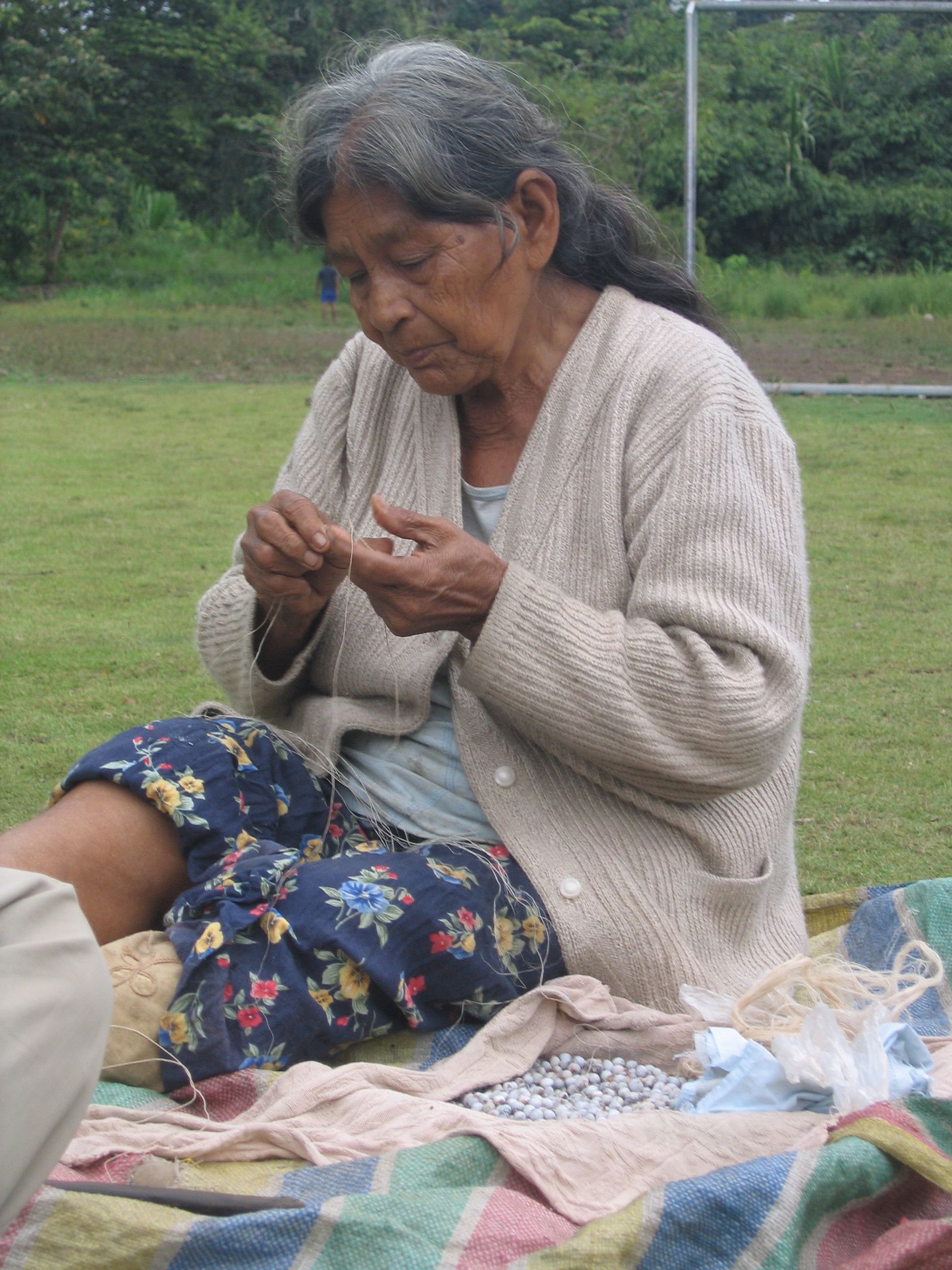
Interventions in Integral Capacity Development
Over the next 2 years, One Sky’s work with ACCA included:
• Specific workshops: on participatory methodologies, understanding worldviews, and gender awareness and protocols.
• Workshops in Integral Theory: providing knowledge on the integral framework and how to use it in assessment, to analyze issues, and for project planning, implementation, and monitoring and evaluation.
• Strategic Planning Sessions: These were both formal and informal. Formally, this set in motion a series of further detailed, comprehensive planning sessions across the organization’s three offices (two in Peru, one in Bolivia). Informally, the relationships between ACCA and One Sky deepened through exciting conversations on innovations in the field of conservation.
• Integral Curriculum Design for Guide Training: A specific training program using an integral curriculum design in both hard and soft skills for local guides for the canopy walkway, as part of a larger initiative for sustainable livelihoods for rural communities.
• Funded Community Promoters for Conservation and Forest Management: This was part of a collaboration between the Huachapaire indigenous community and ACCA, and resulted in one of Peru’s first ever conservation concessions to be managed by an indigenous community.
These specific interventions contributed synergistically to ACCA’s overall effectiveness in rainforest conservation. But, did we get to the next level of thinking and solutions, sufficient to meet such a complex challenge as Amazon rainforest deforestation?
Results to Date
On the whole, ACCA has shifted its approach in the Cusco region substantially since 2007. Clearly this was not solely due to One Sky’s project, but surely that was an important part in this shift. In 2007, ACCA’s land-purchase approach was met with opposition from communities in the Kosnipata region near Cusco. After a two-year integral capacity development project with One Sky, and with more field experience with participatory work, today, ACCA’s approach in the region is clearly one of collaborative community engagement. Says Executive Director, Cesar Moran-Cahusac, “We’re shifting you see, looking more to the social, integral approach in the region.” (January 2009).
Possibly the most notable result of this shift in approach is the 7000 Ha of conserved rainforest in the Amazon headwaters. This area is held in a ‘conservation concession’ in the name of the Huachapaire indigenous community and is co-managed with ACCA’s technical assistance. Let me say that again, just in case you missed it: 7000 Ha of rainforest conserved, in an area that just two years before had tried to kick ACCA out indefinitely. For ACCA to have achieved this is evidence of a dramatic shift in approach for how they now engage with communities on conservation. Moreover, the concession is legally in the name of the Huachapaire people, a first in Peru with an indigenous community, and one of the first in the world that employs this modality of land management.
In the cloud forest, also termed the Andean Amazon, the One Sky project helped ACCA to build a canopy walkway with Canadian company Greenheart. This walkway supports research and is part of a larger environmental education and awareness-raising plan for the region. One Sky’s project designed and funded a guide-training program, so that the canopy walkway will also be a source of livelihood for the nearby communities. As the canopy construction came to completion, I wondered, prior to this One Sky project, would ACCA have sold this to a five-star hotel for its own income-generation for conservation efforts? Instead, ACCA is clearly committed to supporting sustainable livelihoods of local people. This too speaks to ACCA’s shift in how it goes about conservation—from extracting land into private conservation estates, to working collaboratively with local communities for a sustainable livelihoods and long-term forest conservation.
Not all global problems are solved at once, nor are they solved easily. But this project has given us a hint at what it might look and feel like to seek solutions from a different level of thinking than that which created them.
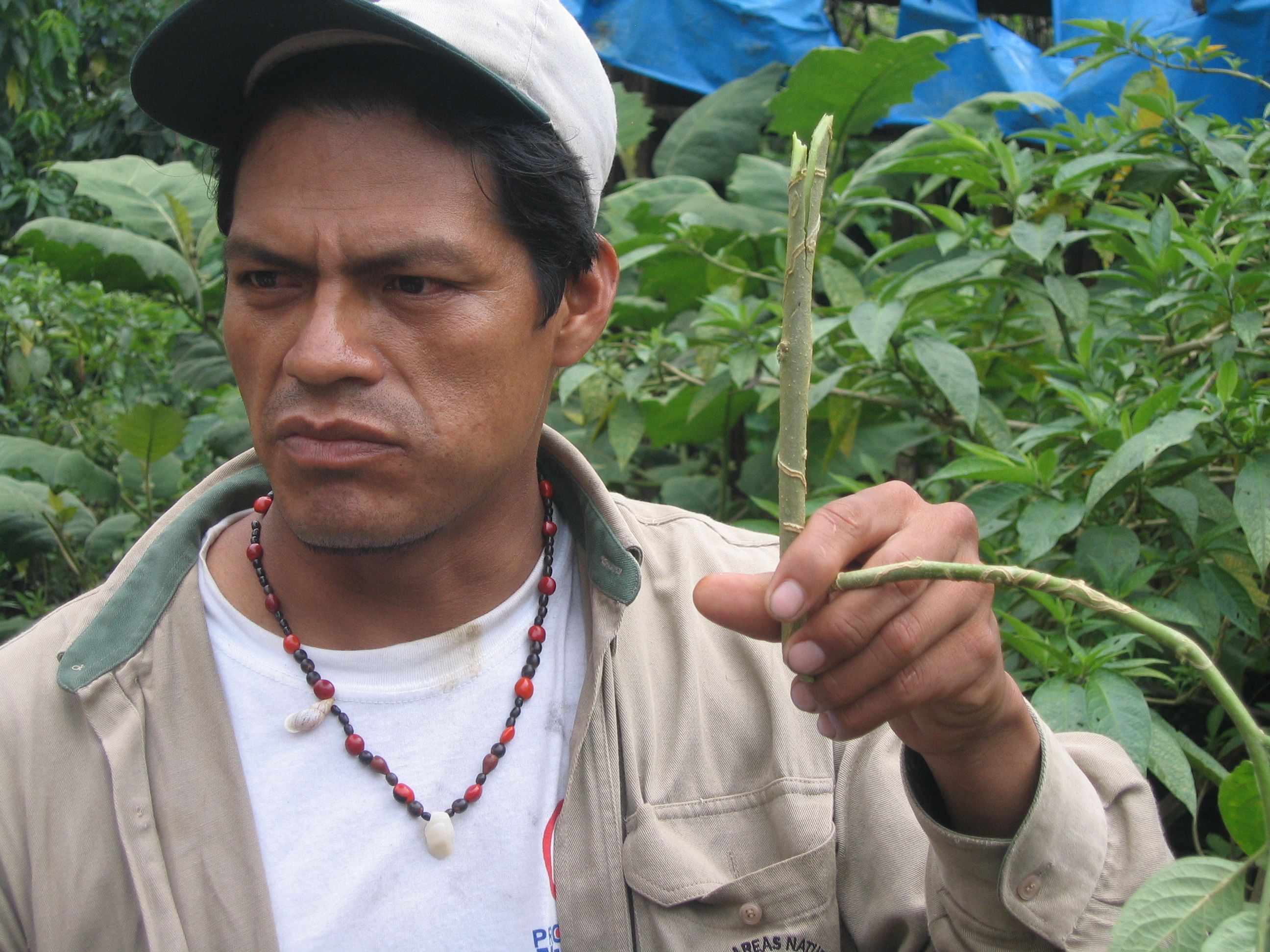
To Read More:
This is a paper presented at the Global Environmental Change and Human Security Conference, Oslo, June 2009
Integral_Approach_to_Capacity_Building_for_Amazon_rainforest_conservation_June_4_2009_resized.pdf

